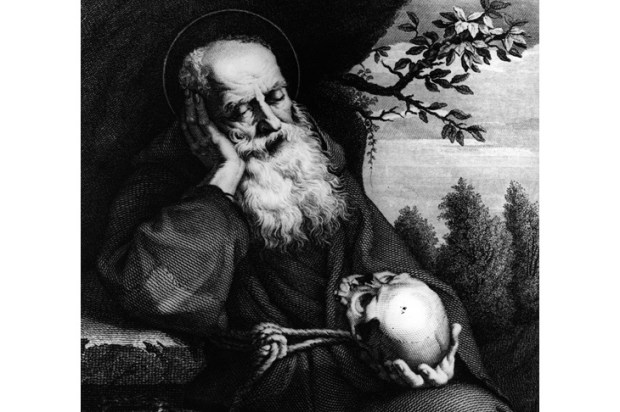The Australian newspaper (March 24, 2025) has started to discuss the issue of working-age people relying on welfare rather than being employed. This issue was on my mind as I travelled through America at the time of the Presidential election, in November 2024. During my travels, I was intrigued with the issue of the open Mexican border, and how Democrats viewed this issue.
Most of my time in America was spent in Ohio (the Midwest), but I also visited Washington DC, New York, and Charleston (South Carolina). These destinations showed me the culture wars are far better understood by the American population compared to Australia, which I fear will become a standout laggard on resisting the decline of Western Civilisation.
When speaking to Democrats, and especially when I travelled with a rusted on Democrat supporter, I raised the issue of the open border to try and understand the thinking of why it is tolerated. The usual response was an initial protest that the issue wasn’t significant, or it was a distraction. The bottom line was always the response ‘the immigrants do the jobs that Americans don’t want to do’. That is a reasonable response, but it begs the question, ‘Why don’t Americans want to do these jobs?’ I got the sense it was impolite question (maybe racist?) or ‘just the way things are’. I also got the sense that the answer to this question raised uncomfortable issues that the Left did not wish to discuss, and I was intrigued to find out what those issues were.
The answer to the question turns out to be as much cultural as it is economic, but I didn’t know where to look for the answer until I met with Rusty Reno (Russell Ronald Reno III), the Editor of First Things magazine, based in New York. First Things is an excellent conservative, scholarly, and catholic magazine (and podcasts) that takes a strong interest in cultural issues. Mr Reno put me onto two books; Coming Apart – The State of White America 1960-2010 by Charles Murray (2012), and Men without Work by Nicholas Eberstadt (2022). Both books focus on men. There are other important issues discussed in the books such as the role of women in the workforce, race, criminal records (a big issue in the USA), education, and more, but to keep this article manageable I’ve focused on men only.
In Coming Apart, Charles Murray explores the growing cultural and economic divide in white America from 1960 to 2010. He argues that America has split into two distinct classes: an educated, affluent ‘new upper class’ and a struggling ‘new lower class’.
Murray argues that the increasing separation between these two groups threatens core American values, such as marriage, industriousness, honesty, and religiosity. He warns that the decline of these values among the lower class (or working class) could lead to social and economic decline.
And certainly this decline has happened. Since these books were written it has become clear that the protectors of the working class have been abandoned by the Democrats in America and Labor in Australia. The elites have shown revulsion towards them and instead favoured selected groups such as LGBT+, feminists, racial minorities, and generally seeking to deride traditional values.
While the loss of jobs through globalisation is well understood and discussed in society, what is not discussed are the social and cultural issues that are a major contributor to the abandonment of work. This is where the books by Murray and Eberstadt offer fearless insight.
Murray discusses cultural isolation where the upper class often lacks understanding of mainstream working-class life, leading to an elite bubble. While the elite generally maintain traditional values – strong marriages, stable families, and a strong work ethic – they fail to promote these values to the broader society.
Murray contrasts the rise of the elite with the decline of working class white Americans, whom he argues have suffered due to cultural and economic shifts. In particular, he discusses the decline of industriousness. During the 1960s, most working-class men had stable, full-time jobs. By 2010, many had dropped out of the workforce. The decline in labour force participation was not solely due to economic factors but also to a change in cultural attitudes toward work.
Of course, there is the well-known economic principle that when you subsidise something you get more of it, and Eberstadt argues that the US disability programs finance an alternative work-free existence for millions of prime-age men. Resistance to such a notion is widespread amongst academics and policy advisers who have no personal familiarity with people rorting disability for support. On the other hand, practically everyone in JD Vance’s Hillbilly Elegy is related to someone’s gaming disability.
Given the advances in labour-saving technology (bobcats, forklifts, cranes etc) and the focus on safety, OH & S, rehabilitation etc, it should be impossible that that more men would be physically unable to work in 2019 than in 1960, but Murray shows a graph with a steep increase in this period of men too disabled for work.
Eberstadt also argues that much of the official data on men out of work data under reports income sources. There are transfer payments for housing assistance, food stamps, medical assistance, benefits for children, separate disability and veterans programs, workers comp and programs at state and federal levels. Such is the case in Australia with a large network of under-reported transfer payments and welfare subsidies.
Murray outlines research on what men who didn’t work do instead. It is a depressing read. Their leisure did not to involve looking for work, or even hobbies, or reading, or civic activities, but mostly watching television from 27.7 hours per week in 1985 to 36.7 hours in 2003-5. Simply put the men had become less industrious in the 2000s than 20, 30, or 50 years before.
Important cultural changes have produced men who just couldn’t seem to cope with the process of getting and holding a job and, significantly, attitudes towards this have changed so that it is accepted. There is no social shame in living this lifestyle, which is a huge change since the 1960s.
Murray places importance on the role of marriage and stable family with work participation. Since the 1960s marriage rates among the working class have plummeted, leading to an increase in single-parent households. Murray refers to a concept he calls the marriage premium, where the responsibilities of marriage force men to settle down, focus, and get to work, such that married men are 10 to 20 per cent more wealthier than unmarried men. He also points out that children raised in single-parent homes faced worse economic and educational outcomes, reinforcing cycles of poverty.
Murray argues that the welfare state contributed to the decline of the working class by reducing the incentive to work and marry. He suggests that government assistance has made it easier for men to drop out of the workforce and for families to function without stable two-parent households.
He also criticises policy solutions that fail to acknowledge the importance of cultural values. According to Murray, economic policies alone cannot fix problems rooted in social and moral decline.
To pull all these strands together from both books:
- The exit of working class men from the workforce is a long-term trend that will continue.
- Those who exit the workforce are not contributing to society but are dependent upon it.
- These issues are now inter-generational and provide a bad family role model.
- There is an enormous cost to fund these changes.
- Society largely accepts these changes, or doesn’t care, albeit there is much despair caused by the changes. The acceptance of disability means more become disabled. Every malady, even occasional sadness is now medicalised.
- The employment gap is filled by migrants, but migrants require housing, roads, schools, and hospitals which are slow to be funded, causing congestion and possibly racial tensions. I note Judith Sloan argues that the higher migrant intakes enlarge the size of the economy but does not necessarily increase per capita output.
- Men not working is a failure of culture.
I suggest that none of the above is being talked about because:
- The welfare state is seen as sacrosanct.
- The elite don’t care as the working class seen as deplorables.
- The policy implications are too hard.
Coming back to the premise of this article, the reasons why Americans are not doing the work migrants engage in include economic issues, but more importantly, the answer is about cultural change and government welfare policy.
These issues are relevant to Australia. The same cultural issues identified in America apply in Australia. Given the recent track record of Australia avoiding difficult policy issues, it’s hard to imagine any change to the exiting of the workforce by Australians, and the increase in migration.

























